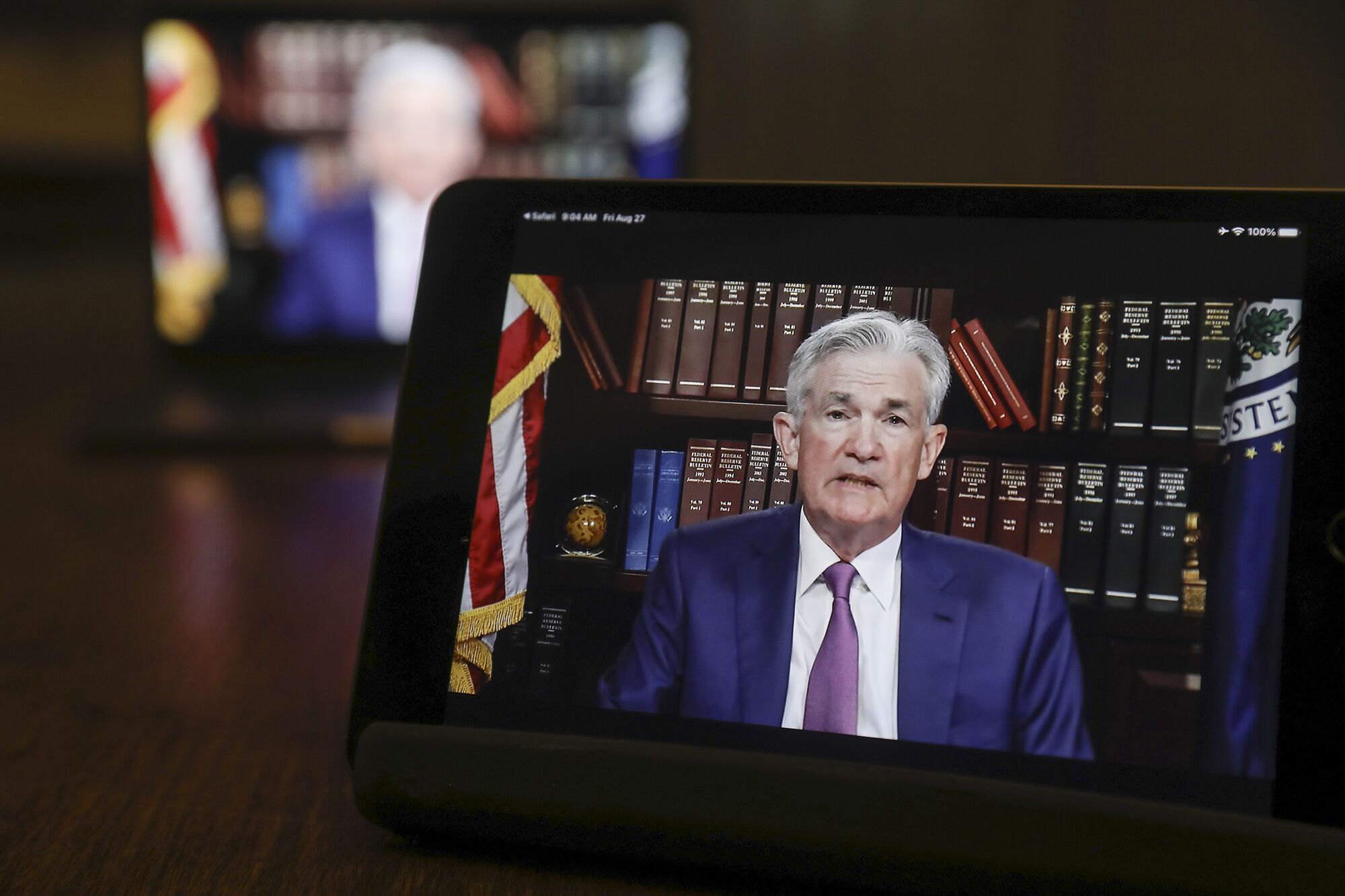Fed’s Powell Cheers Markets But Risks a Mistake
Investors will happily continue to give the Federal Reserve chair the benefit of the doubt, but there’s good reason to question his characterization of policy being “well positioned.”
Federal Reserve Chair Jerome Powell’s speech Friday at the annual Jackson Hole forum was consistent with his very gradual and highly measured approach to policy changes – an approach that financial markets love as it implies a longer period of very loose liquidity that fuels ever higher asset prices. The real question, however, is whether the speech will end up being out of touch with actual economic and financial developments as they unfold over the remainder of this year and beyond.
By refraining from breaking new ground or providing operational details of any evolution in policy, both of which would have inevitably tilted more hawkish at this point, Powell gave investors more reason to take stocks and bonds higher. And indeed, stocks rallied to a new record while bond prices also rose.
Economists, however, seemed less convinced by the argumentation, the stated outlook and what it implies for the Fed’s go-slow policy evolution that markets like so much. More concerned about the two-sided nature of the inflation risk and the potential for a policy mistake, some would have favored a firmer signal about an imminent taper of the Fed’s large-scale asset purchases, something that I have argued is not just needed for both economic wellbeing and longer-term financial stability, but is also overdue.
Powell in his speech appeared mindful not only of the latest facts on the ground that could guide Fed action, but also of the highly visible and accelerating hawkish swing among a growing number of members the policy-making Federal Open Market Committee. Specifically, in evaluating recent economic developments against the Fed’s formal dual mandate (price stability and employment), he observed that the Fed’s "substantial further progress" test of the economic recovery has been met as regards inflation, and that “there has also been clear progress toward maximum employment.”
As these remarks would imply him being inclined toward an earlier taper timetable than he favored just a few weeks ago, Powell was quick to wrap this economic assessment in a twin packaging that was more dovish than what markets expected.
First, Powell made a point of separating the move toward tapering from interest rate hikes that would normally follow. He stated that “the timing and pace of the coming reduction in asset purchases will not be intended to carry a direct signal regarding the timing of interest rate liftoff, for which we have articulated a different and substantially more stringent test.”
Second, in addition to refraining from providing details on the timing and pace a possible taper program, he built into such a future announcement quite a bit of what I suspect he hopes is constructive ambiguity. This included him stating that “we have much ground to cover to reach maximum employment, and time will tell whether we have reached 2 percent inflation on a sustainable basis.”
This messaging is clearly meant to avoid the market disruptions that followed the first taper announcement in 2013 under then-Fed Chairman Ben Bernanke and Powell’s own experience in the fourth quarter of 2018. However, there’s good reason to question the characterization of Fed policy being “well positioned.” For example:
Investors will happily continue to give Powell the benefit of the doubt; after all, his policy approach has paved the way for increasing financial wealth. Economists, though, are more divided. The beneficial impact on the economy of the Fed’s massive asset purchases are limited, if any, while the risks to economy and the financial system continue to mount.
I continue to believe there is just cause for concern about a monetary policy mistake that could undermine future economic wellbeing and financial stability, with adverse social, institutional and political spillovers. I am hoping that my worries are misplaced but unfortunately, both the numbers and the analysis suggest otherwise.

No comments:
Post a Comment